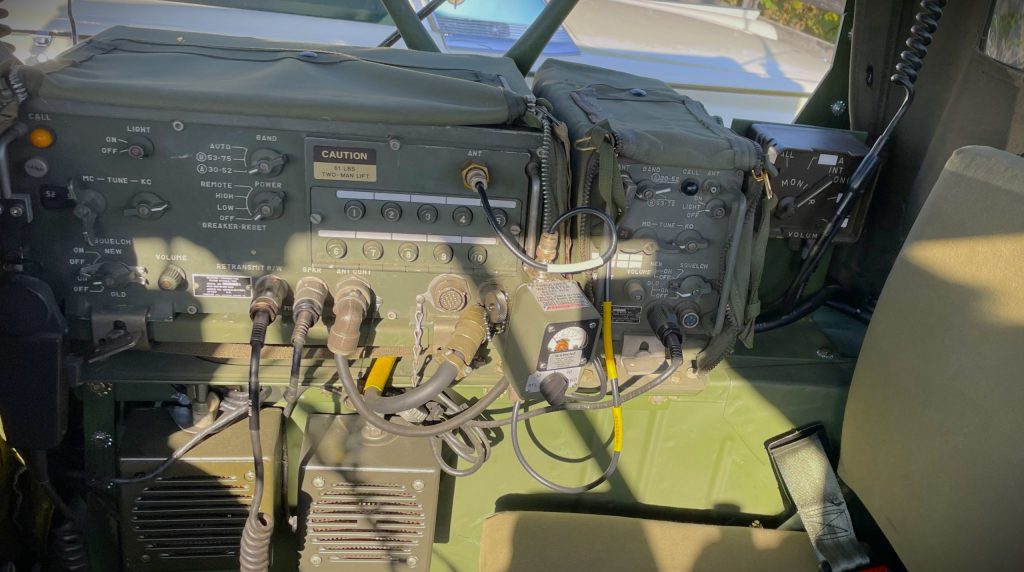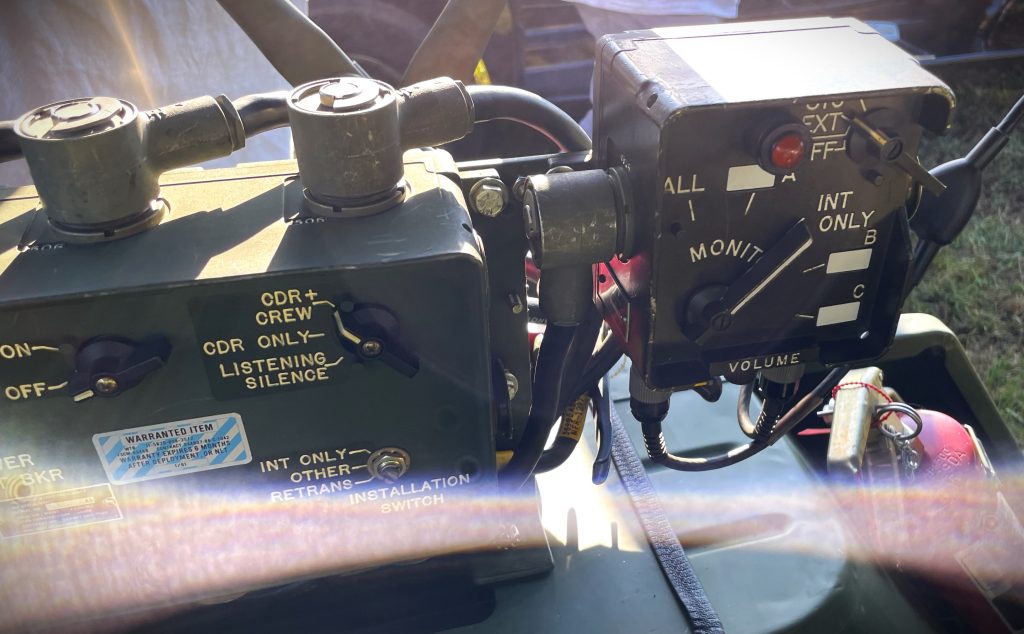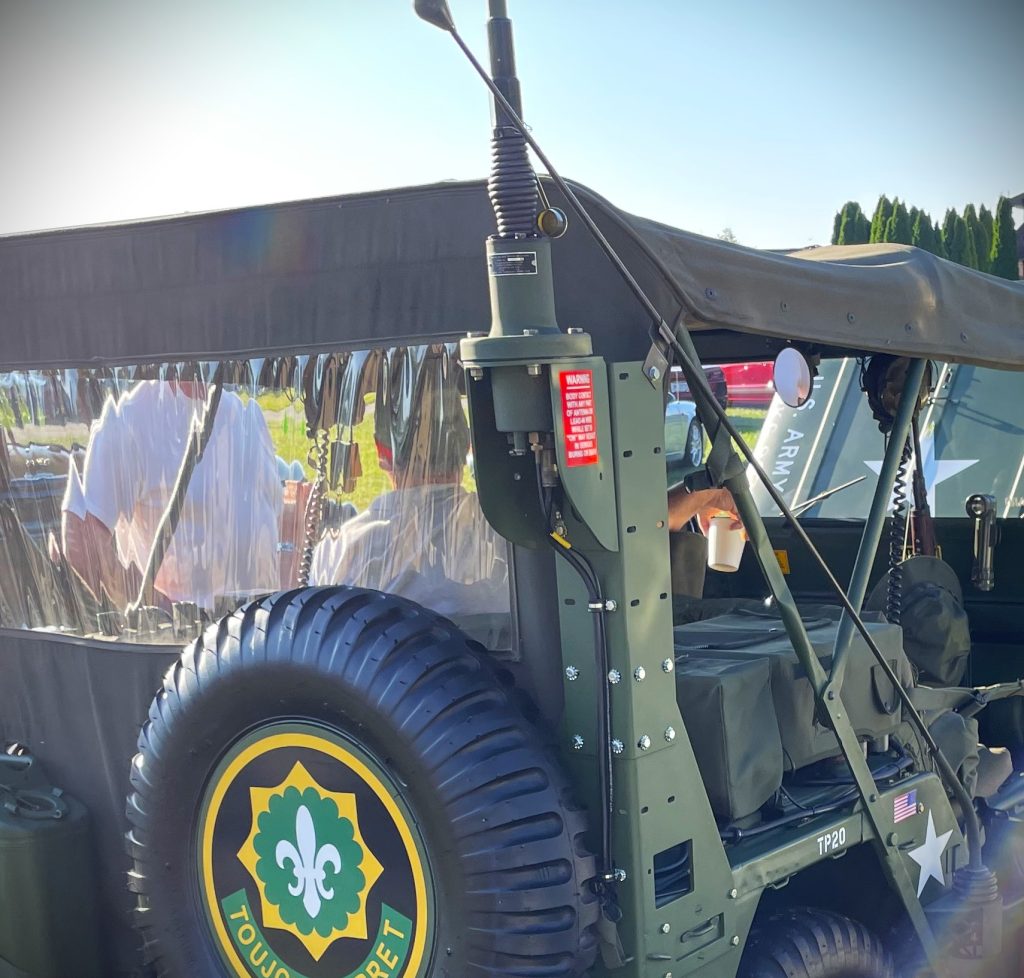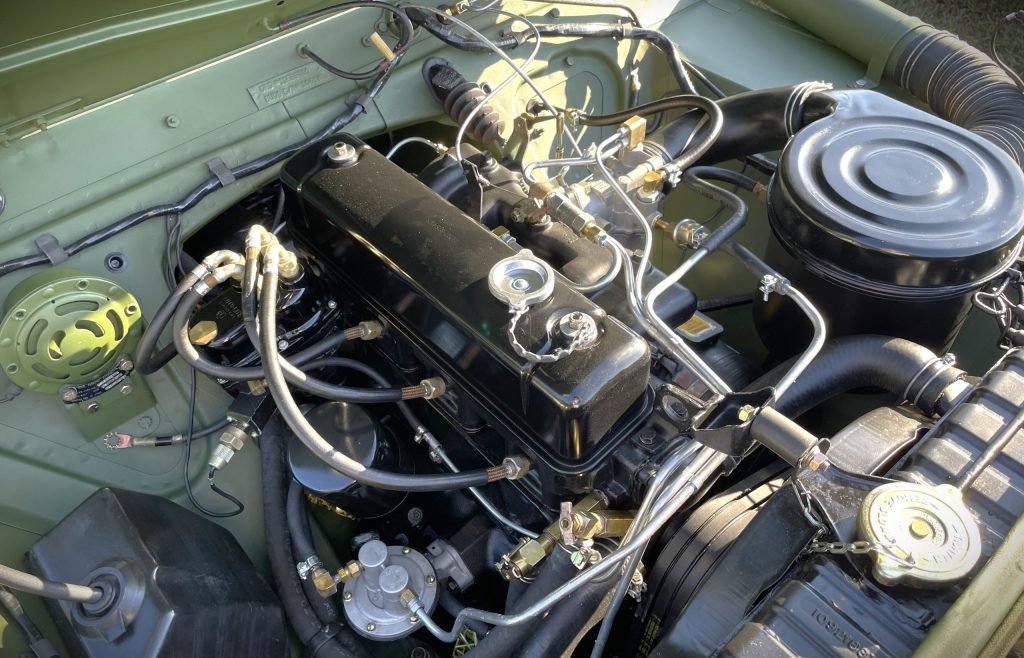Though the iconic military Jeep certainly proved its mettle during World War II, the Ford Motor Company set out to make an even better version in the postwar era.
Starting with a clean sheet of drafting paper, Ford engineers created a vehicle that shared similar external dimensions with the original Jeep, yet had several key improvements.
The end result was the M151 Military Utility Tactical Truck…
…Affectionately called the MUTT.

Unlike the original Jeep, the MUTT had a fully independent suspension for better off-road performance, along with a unibody design that gave the MUTT more interior space.
Yet for a handful of reasons, most decommissioned MUTTs were destroyed and sold for scrap, which meant not many M151 models survived to pass into private hands.
So when we spotted this clean M151A2 (and its radios!) parked at a southwest Ohio car show earlier this fall, we had to find the owner to get the full story.

“I’ve had it seven years,” says Larry Galaske, a retired Army Sergeant. And as luck would have it, Larry is also a Ham Radio operator, KD8RGQ.
He recently upgraded to General Class at Dayton Hamvention® in nearby Xenia, Ohio, so it’s fair to say a lot of thought went into the radios installed in the back of Larry’s MUTT.
And yes, they all work.

“There were two different radios that they used in this era,” Larry explains, gesturing to the communications array on the passenger side fender. “There’s an RT-524, which is a standard manual dial radio.”
Then he points out the other transceiver secured alongside the 524. “This is the 246, which is the command radio. It’s got 10 presets. So you can set it up for battalion, artillery, infantry, whatever you want.”
On the opposite fender is a smaller Model 442 receiver. “You can listen on one frequency while you’re talking on another,” Larry tells us.
The radios cover 30 to 74.95 MHz.

Antenna tuning is handled by a robust mobile base mount at the rear of the MUTT. “When you push the button, you’ll hear the motor dial it. When it does, you can hear the antenna tuning to that frequency also,” Larry says.
“And it’s got a manual override,” he continues. “So if for some reason the motor goes out, you can still go in and adjust it.”

This particular MUTT was made in 1971, which means it’s a later M171 “A2” variant that featured chassis and suspension upgrades to improve its handling.
“I would not have driven this version of it,” Larry explains. “I drove the previous version, the A1, when I was in Vietnam and Germany.”

A military vehicle enthusiast, Larry began looking for a MUTT after selling his Dodge M37 3/4 ton truck. He discovered this one just beginning a rotisserie restoration. “I called this guy in Florida, he’s a retired Colonel Special Forces Vietnam vet, and he said, ‘Yeah, send me a deposit and I’ll finish building it.'”
After heading down to see the M151 in person, Larry cut a deposit check. “I told him I just need good running gear, drivetrain, and paint. I can do the rest of the canvas, the lettering, radios, all that stuff.”
Two months later, the partially completed MUTT was on a truck heading north.

Larry finished the Jeep with period-correct stenciling and insignia. “I actually did this one in a Cold War era,” he explains.
In addition to the proper serial numbers flanking the hood, up on the front glass you’ll see “SGT GALASKE” stenciled on the driver side, with “CPT WARD” on the passenger side.
“He was my Commanding Officer,” Larry tells us. “He made Captain when he went to Nam, I made Sergeant when I went to Nam.”

Larry admits he’s sometimes considered selling his MUTT and picking up something more modern.
“But I love green,” he jokes. “It seems the older I get, the greener I get.”
After a good laugh, we thanked Larry for his service and let him get back to speaking with the crowd of folks that had been slowly gathering around his M151, eager to learn its history.

